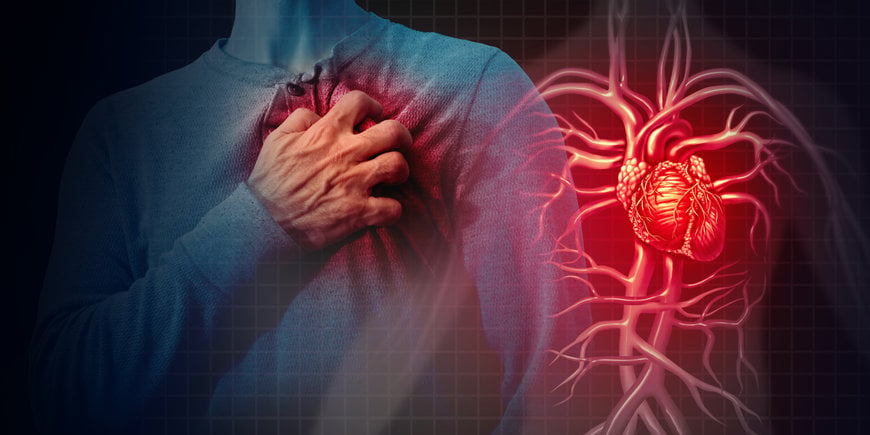
It’s 3:00 a.m., and you’ve just arrived at the home of a woman in her early 70s. She told the dispatcher that her husband was feeling a bit of discomfort in his chest and got up to go to the bathroom several minutes ago. She heard him fall in the hallway and found him unresponsive. You’re informed that he has a history of high blood pressure and has been a smoker for over 50 years, alerting you to the possibility he had a heart attack.
Cardiovascular conditions often cause complications in airway management and suctioning. With heart disease affecting about one in 20 Americans and accounting for one in every five deaths, it’s vital to know how to identify the signs of heart disease and how to manage the airway of a cardiac patient.
Common Heart Problems
While there are many cardiovascular diseases or events a patient can suffer from, three of the most common in the United States are:
- Heart Attack (a blockage of blood flow to the heart)
- Stroke (a decrease or blockage in the brain’s blood supply)
- Arrhythmia (an irregular heartbeat)
These conditions can cause serious complications for a patient and make airway management more difficult, so it’s important to know how each condition presents itself.
Heart Attack
Heart attack symptoms usually occur suddenly and may come and go. Some symptoms include:
- Chest pain, discomfort or pressure
- Radiating discomfort to arms, neck, back, jaw or abdomen
- Shortness of breath
- Pale, cool, sweaty skin
- Nausea or vomiting
- Unexplained fatigue
- Dizziness or fainting
If a heart attack is suspected, you should perform an electrocardiogram (EKG) to check the patient’s heart rhythm. A heart attack can quickly lead to cardiac arrest, so you must quickly diagnose the patient, provide care and transport them to a hospital.
Stroke
The signs of a stroke are often subtle and may at first go unnoticed by the patient and family. However, immediate recognition and treatment are essential in reducing the chances of a stroke victim suffering from disability or death.
While there are several types of strokes, general symptoms include:
- Facial droop
- Difficulty or inability to speak
- Numbness to the face, arm or leg – especially on one side of the body
- Weakness – especially on one side of the body
- Confusion
- Loss of balance and coordination
- Incontinence
In your diagnosis of the patient, it’s critical you determine the time when the symptoms began, as disabilities from a stroke can become irreversible in a matter of hours.
Arrhythmia
Arrhythmia can be difficult to diagnose, as symptoms are hidden and include:
- Palpitations
- Pounding in the chest
- Dizziness or lightheadedness
- Shortness of breath
- Chest discomfort
- Weakness or fatigue
As with heart attacks, an EKG is the most effective way to diagnose arrhythmia. This condition should be taken seriously when surveying a patient and a high degree of suspicion should be maintained, as arrhythmia can lead to a heart attack or cardiac arrest.
Suctioning a Patient with Heart Problems
The most important thing to know when treating patients with heart problems is that oxygenation is vital, as heart disease causes mild reductions in oxygen saturation at best and severe desaturation at worst.
Airway management may be difficult, as intubation and suctioning may cause or worsen arrhythmia or hypoxia. As a result, cardiac patients should be placed in a lateral recumbent position to reduce the risk of aspiration.
However, if intubation and suctioning are necessary, don’t stop the oxygenation process. Preoxygenate both before suctioning and in between each suctioning session. Additionally, try to avoid suctioning for longer than 15 consecutive seconds. Exceeding this time increases the risk of hypoxia, cardiovascular arrest and worsened arrhythmia – a potentially deadly combination when working with a patient already suffering from a heart problem.
To minimize risk to the patient, you should use a catheter that has a large inner diameter, such as the SSCOR SDC Catheter™ (Formerly the SSCOR DuCanto Catheter®). This prevents clogging and allows airway contaminants to be cleared quickly, reducing the amount of time spent suctioning. This should be paired with a portable suction unit that fits in your airway bag and is available for use at a moment’s notice.
When treating patients with heart disease, it’s often seconds, rather than minutes, that make the difference in patient outcomes. This necessitates swift action but also a knowledge of the correct action to take. While heart problems are potentially difficult to diagnose and present challenges to suctioning, the proper knowledge and training will help you provide cardiac patients with effective treatment, optimizing the chances of a successful outcome.
Editor's Note: This blog was originally published in March, 2022. It has been re-published with additional up to date content.
















